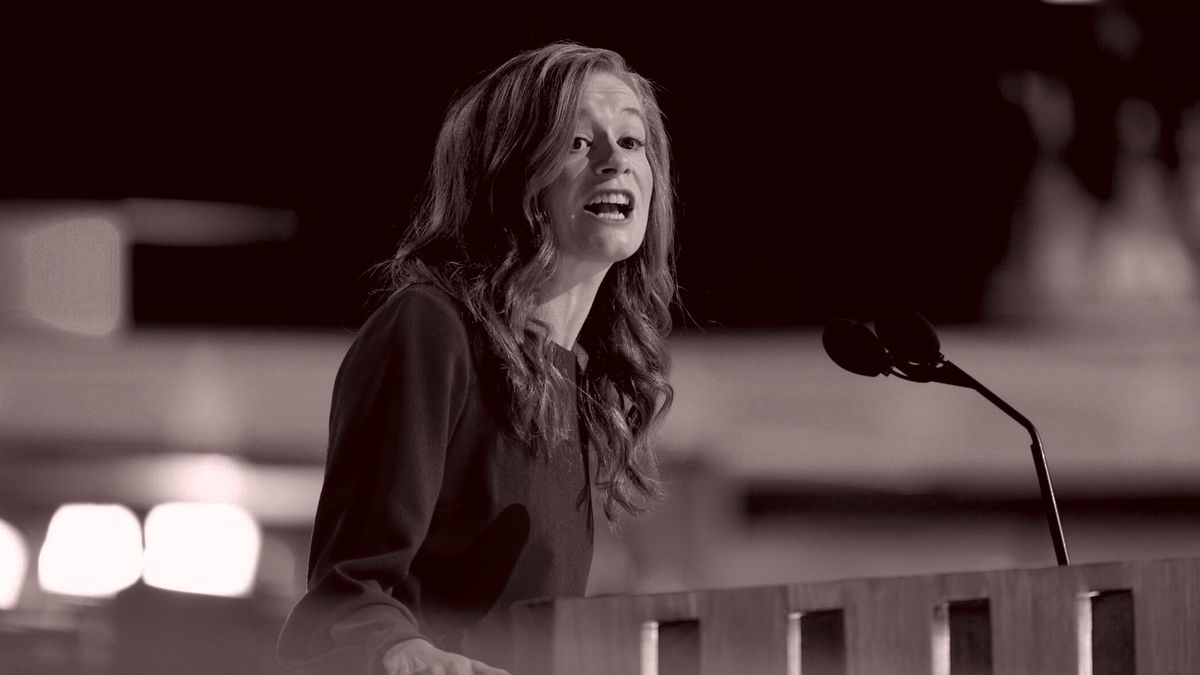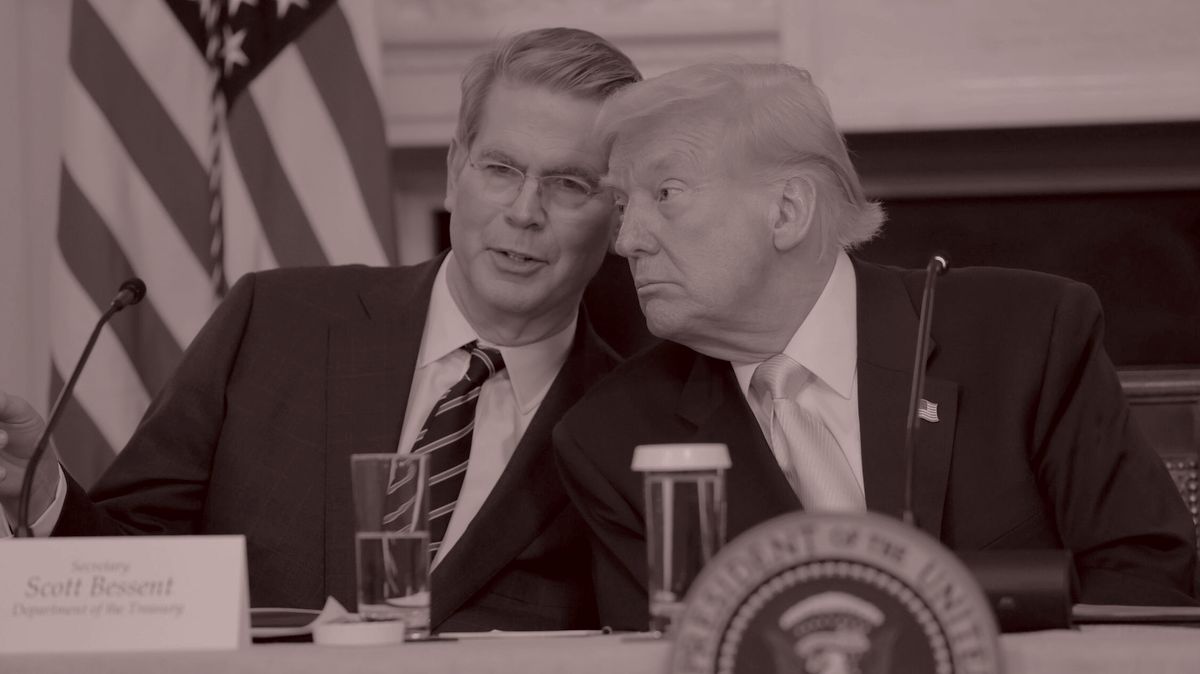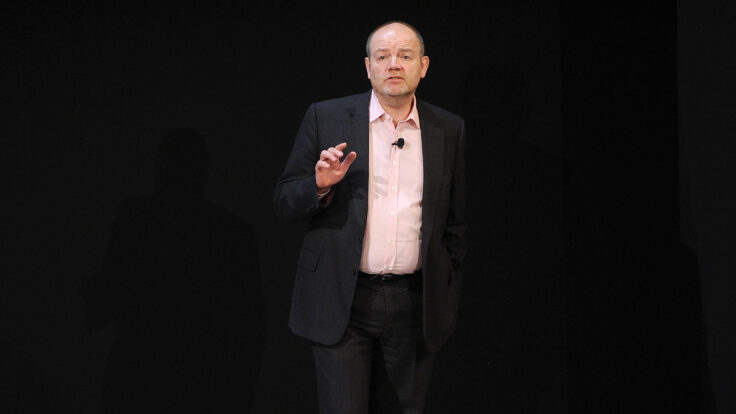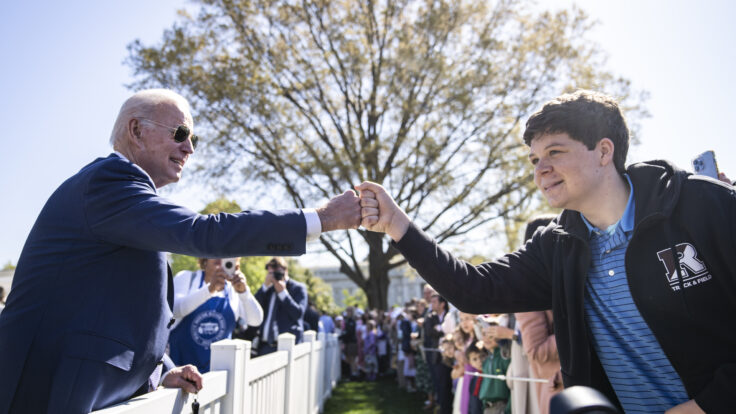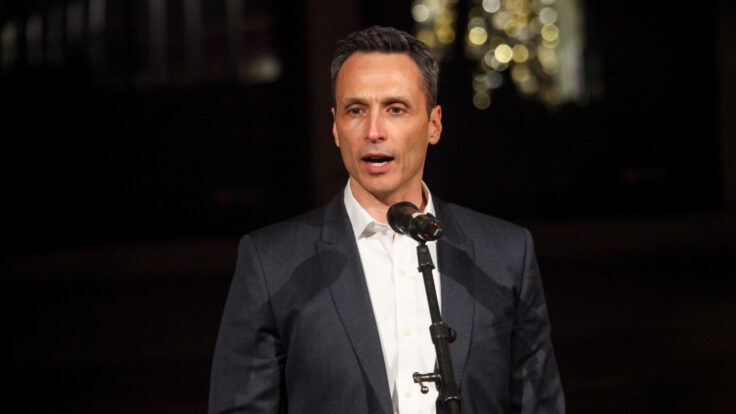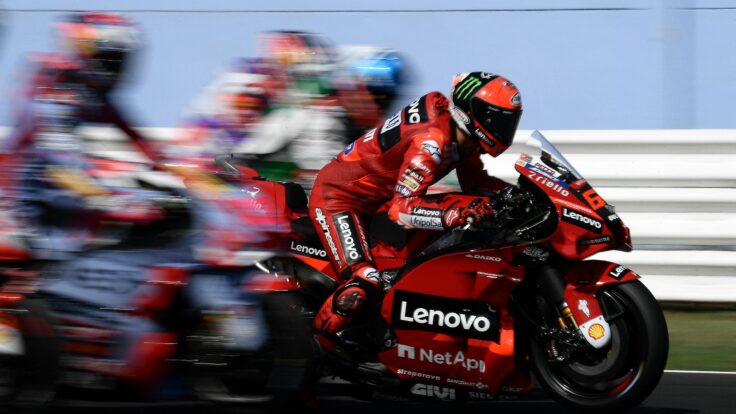Hello and welcome back to The Best & The Brightest. I’m Leigh Ann Caldwell,
writing to you on this gorgeous sunny Monday.
In today’s issue, my colleague Abby Livingston reports on the surprisingly laissez-faire primary strategy emerging among Democrats as the party eyes multiple open-seat Senate races for the first time in years.
But first…
|
- Michigan
meddling: The race to replace outgoing Democratic Sen. Gary Peters in Michigan is expected to be one of the most competitive general elections this cycle, with contested primaries on each side. But Senate Majority Leader John Thune and N.R.S.C. chair Tim Scott tried to preemptively clear the Republican primary field race by endorsing former Rep. Mike Rogers just minutes after he announced his candidacy this
morning.
The early endorsement reflects Thune and Scott’s bullishness about their party’s prospects in the battleground state, which President Donald Trump won by 1.5 percent in November—and their confidence in Rogers, who lost that cycle’s Senate race to then-Rep. Elissa Slotkin by a mere 0.3 percent, according to a Republican source familiar with their thinking. The early intervention, if successful, would also save tens of millions of Republican
dollars and prevent an intraparty fight. But Democrats think that if Rogers couldn’t win when Trump was on the ballot, he’s going to have a much harder time winning in a midterm when he’s not.
Rogers, a former F.B.I. agent who served as chair of the House Intelligence Committee before leaving Congress in 2015, secured Trump’s endorsement in a crowded primary in 2024 after coming out of semi-retirement to run against Slotkin. And it’s hard to imagine that Thune and Scott would
have come out early for him if they didn’t expect him to win Trump’s endorsement again. But Republican Rep. Bill Huizenga, who is also considering a run, doesn’t sound deterred despite the party leadership’s endorsement. “I am encouraged by the outreach and calls I have received both before and after the Senate Leadership’s announcement,” he wrote on X, where he also tried to position himself as the more Trump-aligned candidate, adding that Michigan needs someone who will “fight
for President Trump’s agenda.” Former Trump-endorsed gubernatorial candidate Tudor Dixon, who lost to incumbent Gretchen Whitmer by double digits in 2022, is also considering jumping in.
Meanwhile, the Democratic primary is expected to be crowded. State Sen. Mallory McMorrow has already announced; Rep. Haley Stevens is one of several other Democrats considering a run, too. Abby has much more on this below.
- Court defiance: The judicial crisis over the Trump administration’s open defiance of court orders has deteriorated in two separate episodes in a matter of days. Most explosively, the administration has failed to comply with U.S. District Judge Paula Xinis’s order to “facilitate” the return of Kilmar Abrego Garcia of Maryland and provide daily updates on his whereabouts after he was sent with other migrants to a prison in El
Salvador despite having protections against deportation.
Trump administration officials, including anti-immigrant hardliner Stephen Miller, insist that Garcia is an “illegal alien MS-13 terrorist,” though Garcia’s family denies this and the government admitted in court documents that it erroneously deported him because of an “administrative error.” Meanwhile, Trump and Salvadoran President Nayib Bukele suggested during an Oval Office meeting today that
neither has the ability to release Garcia.
The administration also defied a court order from the Trump-appointed U.S. District Judge Trevor N. McFadden to restore the Associated Press’s access to the Oval Office after Gulf of America-gate. McFadden called the “viewpoint-based” restrictions on the AP’s access
“constitutionally unacceptable.” The AP was barred from the Oval press conference with Bukele.
- Abby on the early money race: The first midterm House campaign finance reports are rolling in, with several candidates posting seven-figure totals. Despite the deceptive sleepiness of the first quarter, this period can make or break a House campaign, and for incumbents in particular: They need to scare off possible general-election challengers
by raising money right now.
For ambitious young pols hoping to take down a lethargic incumbent, one Republican consultant characterized how they might read the campaign-finance tea leaves: If the incumbent raised $400,000 or less, that’s a green light to stage a challenge; $600,000 to about a million is a yellow light, meaning watch and wait before jumping in; and $1 million or more probably means it’s better to save your energy for another
cycle.
Several vulnerable members are in the daunting million-dollar club so far, according to the Downballot campaign trackers: Republicans Jen Kiggans of Virginia ($1.16 million) and Mike Lawler of New York ($1.46 million, but he may run for governor); and Democrats Eugene Vindman of Virginia ($2 million) and Pat Ryan of New York ($1.2 million).
Some possible challengers are posting strong numbers, too: New York
Democrat Blake Gendebien raised $3 million this quarter, which is quite a war chest to bring against Elise Stefanik in 2026, though the congresswoman is a strong incumbent. (Gendebien was the all-but-certain Dem nominee in the NY-21 special election that never was.) Meanwhile, the Democrats’ favorite House recruit this cycle, Wisconsin’s Rebecca Cooke, who is challenging Republican Derrick Van Orden, raised $1 million in
three weeks.
These are most likely the strongest numbers we’ll see. Incumbents and candidates with weak quarters tend to quietly file their F.E.C. paperwork just before the April 15 midnight deadline and hope no one notices. —Abby Livingston
|
|
|
The Democratic establishment has traditionally tried to clamp down on primaries for U.S.
Senate races, to conserve money in what can turn into $50 million races. But early jockeying for open seats suggests that ambitious pols are in no mood to take orders from Chuck Schumer.
|
|
|
Over the past 15 years, the Democratic Party has perfected a playbook for avoiding blue-on-blue violence,
employing heavy-handed management of Senate primaries to guide the will of voters and preserve general election cash. Dating back to Chuck Schumer’s stewardship of the D.S.C.C. in 2006, the modus operandi was to identify a preferred candidate and implicitly or explicitly back them, which effectively cut off party-aligned funding for potential rivals. Emily’s List, the League of Conservation Voters, labor unions, etcetera would help convey these signals to donors, even
without making formal endorsements.
This status quo provided a number of advantages from the party’s perspective, not least that it saved money: The modern Senate race is of the scale and expense of a mini-presidential campaign, but not every candidate is capable of raising a $50 million campaign, and anointing a preferred candidate prevents the party from blowing a ton of money in the primary just to advance a weak one. Indeed, the party’s bare-knuckled approach to steering primaries
successfully elevated Tammy Baldwin, Chris Murphy, Tammy Duckworth, Mark Kelly, Jon Ossoff, and Raphael Warnock to the Senate. As a result, Democrats have mostly avoided the kinds of problematic candidates who have blown Senate races for Republicans, like Blake Masters, Herschel Walker, Kari Lake, et al.
According to this
tradition, younger candidates were expected to wait their turn—and true out-of-left-field upsets were extraordinarily rare. That may not be the case this cycle. Over the past few years, cracks in the system have begun to show: In 2021, then-Rep. Conor Lamb began the Pennsylvania Senate race as the candidate implicitly preferred by establishment-y types, but was ultimately steamrolled by then-Lieutenant Governor John Fetterman, who went on to win the general.
National Democrats say that race was instructive, demonstrating how they may not always know who the best candidate is at the outset.
Now, however, the party’s habits will really be tested. This year, the congressional map is stacked with potential slugfests among ambitious up-and-comers in Michigan, Minnesota, and New Hampshire—all states where retiring Democratic senators will leave behind open seats. And the D.S.C.C., which would ordinarily weigh in with an endorsement, has
been sitting out of these races so far.
There are several reasons for the party’s laissez-faire approach. Most obviously, open-seat races are often once-in-a-career opportunities—and far easier to win than taking on a Republican, let alone a Democratic, incumbent. Perhaps more importantly, Democrats haven’t been so disillusioned with their leadership in years. In conversations with party operators in Washington and beyond this past week, sources enumerated a multitude of
sins: the effort to protect Joe Biden from the doomed reality of his reelection campaign; the lightning-quick selection of the equally doomed Kamala Harris to replace him; the Schumer budget capitulation. There’s little appetite to take orders from party elders. But also, the party has a generationally strong down-ballot bench.
Of course, it’s still extremely early—the filing deadlines for some of these races are still as much as a
year away. And party stakeholders may yet get involved. But all current indications suggest that prospective candidates are considering the party’s input as just one of many factors in their decision-making.
|
For now, the prospect of multiple competitive Senate primaries is a source of curiosity more than
consternation among the Democratic professional class that funds and operates campaigns. Sure, the lack of clear guidance from party leadership could lead to some hurt feelings if typically united Democratic groups find themselves at odds. But it’s something of a first-class problem for organizations like Emily’s List, a dominant player in Senate politics dedicated to “supporting female Democratic candidates who support abortion rights,” and which has nurtured some of the potential candidates
since early on in their careers.
The primary field might resolve itself early in New Hampshire, where the betting money is that Rep. Chris Pappas will chase off his colleague Maggie Goodlander and have the race to himself. In Minnesota, Lt. Gov. Peggy Flanagan has announced she’s running, but Rep. Angie Craig appears to be laying the groundwork to run against her. Blue Minnesota may not end up having a competitive
general, but the party will be hoping to get the primary over with early so that the D.S.C.C. and super PACs don’t have to spend there.
But it’s Michigan that’s really capturing the attention of the Democratic political class. State Sen. Mallory McMorrow has announced she’s in for the Senate race after having built the strongest national profile for a state legislator since Wendy Davis. Her most likely top-tier rival will be U.S. Rep.
Haley Stevens, who is expected to announce her own campaign imminently. (Retired Senator Debbie Stabenow, the Michigan power broker who was key in establishing Elissa Slotkin as the dominant Democratic player last cycle, failed in her effort to recruit Rep. Kristen McDonald Rivet, who will instead seek reelection in the House.)
In North Carolina, where the Republican incumbent Thom Tillis is vulnerable,
it’s no secret that former Gov. Roy Cooper is considered the Democrat best positioned to challenge him. But ex-House member Wiley Nickel jumped into the race last week anyway, and he brings a healthy but not determinative $2.3 million left over from his House account. Finally, as Illinois politicos wait to see whether 80-year-old incumbent Democrat Dick Durbin might retire, the list of possible contenders for his Senate seat has grown
to include U.S. Reps. Robin Kelly, Raja Krishnamoorthi, and Lauren Underwood, in addition to Lt. Gov. Juliana Stratton. This seat is almost certain to remain in the Dem column, but the lack of adherence to protocol around the retirement of the most dominant player in Illinois politics is striking.
|
The Bright
Side of a Fight
|
Besides cost, there’s another reason the Dem establishment likes to avoid primaries for Senate seats: They’re
unpredictable. As presidential primaries have shown, they can be demoralizing and divisive experiences that make it difficult to bring the party together for the general (see: Hillary vs. Bernie), or they can be healthy exercises that force candidates to improve (Hillary vs. Obama). This cycle’s Senate primaries could be brutal: Michigan, in particular, is a prize fight given the talent involved, and especially considering the potential for a
closely fought general given Slotkin’s fraction-of-a-point victory last cycle in a state that Trump won simultaneously.
Few expect any such battles to take place along the ideological progressive-vs.-moderate lines of yesteryear; rather, they might center on candidates’ appetite for challenging the Trump administration. That’s already manifesting in Michigan, where McMorrow has stated she would not vote for Schumer as her party leader. The tone of these fights will matter, especially
those that won’t resolve until late summer, leaving little time to heal primary-related wounds before the general.
The D.S.C.C. is optimistic about the campaign ahead. “Democrats have a Senate map that is ripe with offensive opportunities, particularly when coupled with the building midterm backlash against Republicans,” said spokeswoman Maeve Coyle. “Open seats in states that the G.O.P. hasn’t won in decades don’t change the fundamentals of the cycle: Republicans have
more seats to defend, and they’re doing it in a hostile political environment.”
One upshot of potentially crowded Senate primaries, some Democrats say, is the opportunity to demonstrate the strength of the party’s bench, which includes many candidates who first came to office in 2018 during Trump’s first presidency. Plus, they argue, it’s reassuring that so many people want to run. The party experienced some recruitment fears in January, during the peak of its demoralization, but
fury over the Trump-Elon show has done more to inspire potential candidates than anything party leaders could do. “When you see a lot of people running for office, it’s a sign that people feel positive about their chances,” said pollster Margie Omero. “I see it as a sign of health.”
|
|
|
Join Emmy Award-winning journalist Peter Hamby, along with the team of expert journalists at Puck, as they let you in on the
conversations insiders are having across the four corners of power in America: Wall Street, Washington, Silicon Valley, and Hollywood. Presented in partnership with Audacy, new episodes publish daily, Monday through Friday.
|
|
|
Unique and privileged insight into the private conversations taking place inside boardrooms and corner offices up and down Wall
Street, relayed by best-selling author, journalist, and former M&A senior banker William D. Cohan.
|
|
|
Need help? Review our FAQ page or contact us for assistance. For brand partnerships, email ads@puck.news.
You received this email because you signed up to receive emails from Puck, or as part of your Puck account associated with . To stop receiving this newsletter and/or manage all your email preferences,
click here.
|
Puck is published by Heat Media LLC. 107 Greenwich St, New York, NY 10006
|
|
|
|

